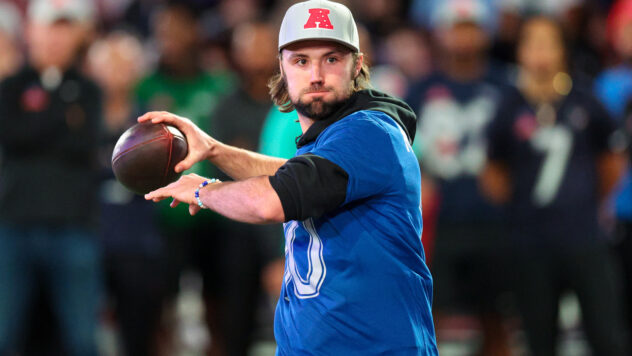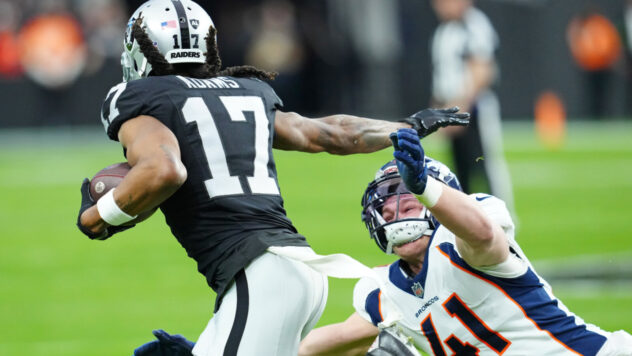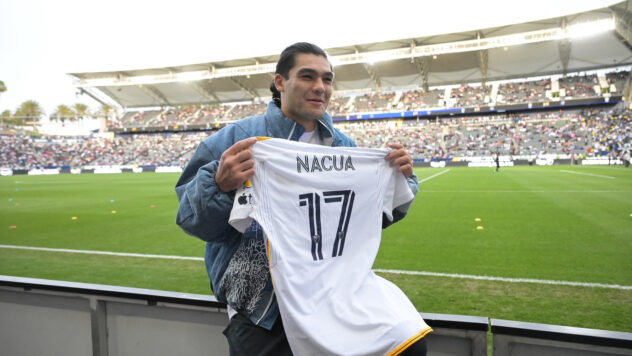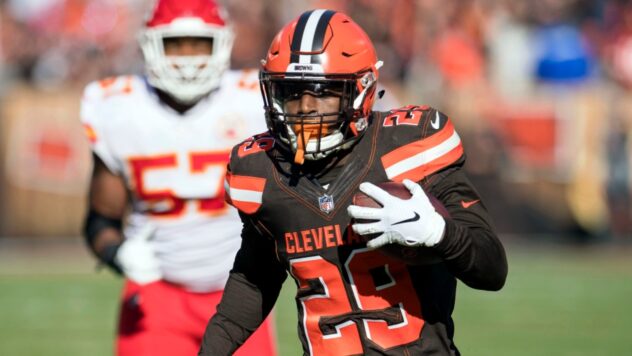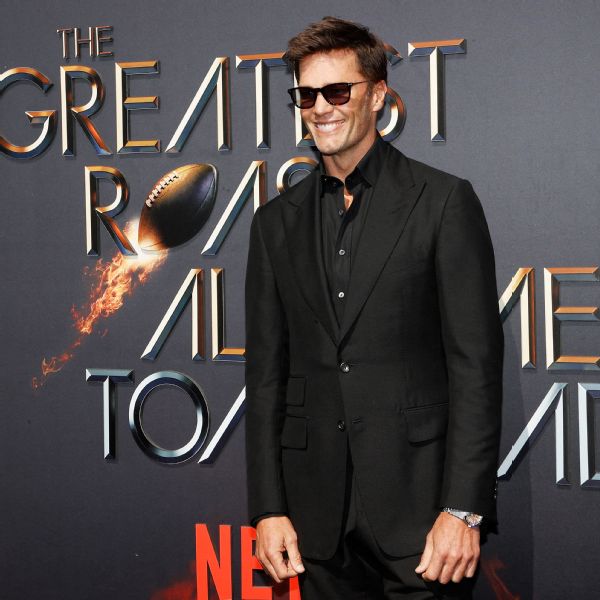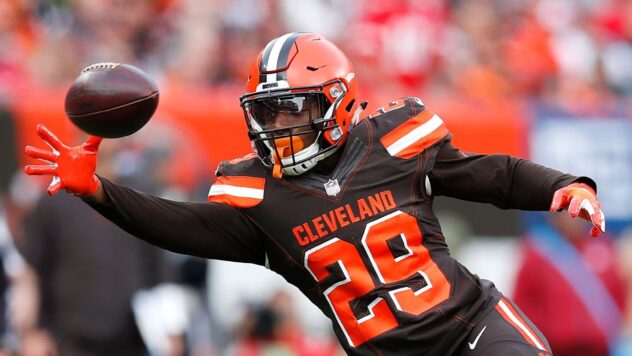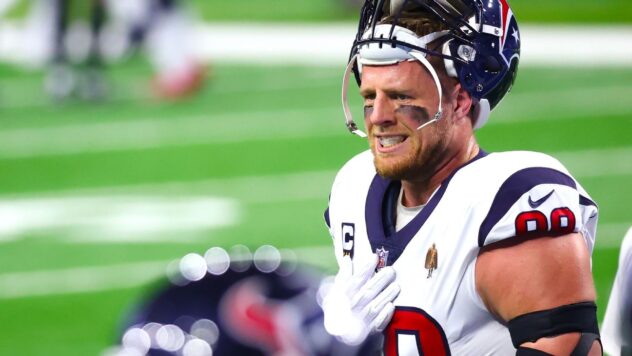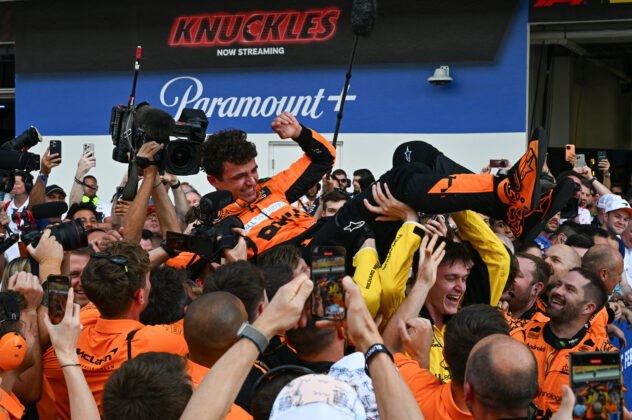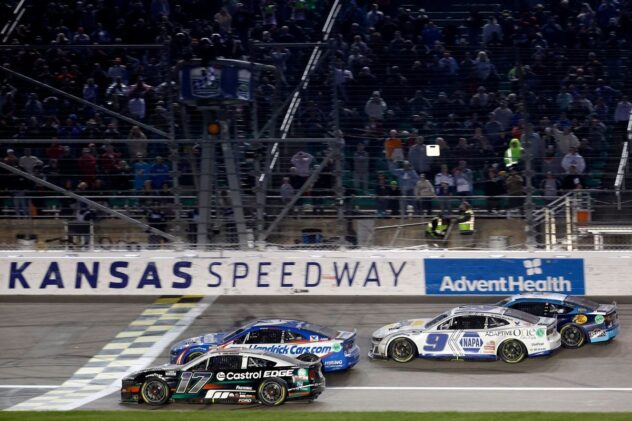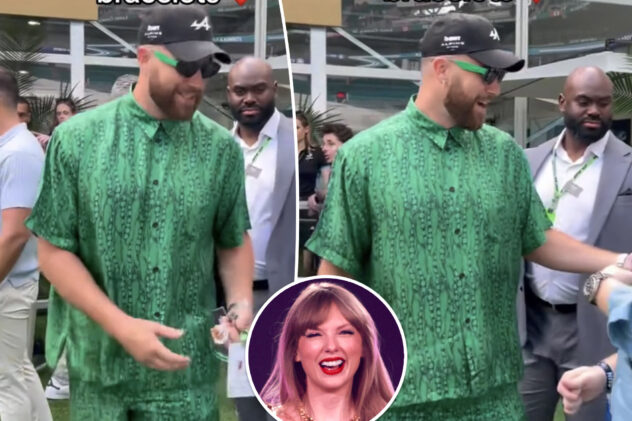Extra Points: The Jets Are Good Broncos, Player Trades Take Time To Make Impact, Tom Brady Isn’t It, and New WR Metrics
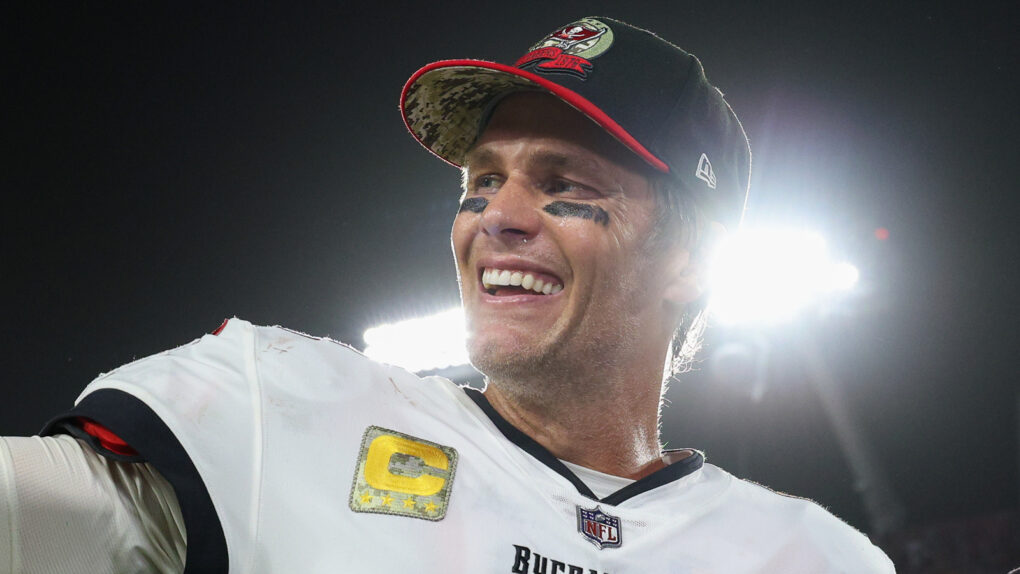
NFL Week 9 reserved its best games for the early-afternoon slate, assuring that no one would get to watch some of the more exciting affairs. Instead, we had a late-afternoon slogfest between the Rams and Buccaneers in a “rematch” of the divisional playoff game from last season and a Seahawks-Cardinals game that looked like it could have been close before the game ran away from Arizona.
The NFL Week 9 Recap takes a look at the biggest storylines, including the New York Jets knocking off the Buffalo Bills, the impact of player trades, Tom Brady’s performance, WR metrics, and more.
NFL Week 9 Recap
The separation of team tiers that we had hoped to see by this point in the season seems to have happened, though not in any satisfying way. The Miami Dolphins and Dallas Cowboys might be occupying a second tier.
It might rub some people the wrong way, but it’s possible to add the Vikings, Giants, and Jets to that group, though they might occupy a third tier with the Seahawks, Titans, or Ravens.
Either way, we no longer have a group of elite teams followed by a mélange of sort-of good teams. This should make for some more exciting matchups down the road and could make the playoffs mean something, a situation that wasn’t entirely the case a few weeks ago.
Along the way, we got some insight on the Jets, newly traded players, Tom Brady’s place among current quarterbacks, and a new way to look at receiver metrics.
The Jets Are the Broncos, but Good
It’s hard to ignore the Jets, especially after what that front four did to Josh Allen. While the pressure percentage was nothing special — Allen was pressured on 31% of dropbacks, about league average — what they did with it was extraordinary. Allen was sacked five times, the most he’s been taken down in the pocket all year. Doing that on just 39 total dropbacks is particularly impressive.
It led to uncharacteristic mistakes from Allen, including a pair of picks. One of those picks preceded a 19-yard touchdown drive that put the Jets in the lead. New York, who traded away depth edge rusher Jacob Martin, have a fantastic rotation along the defensive line. That rotation is made even more impressive by the fact that rookie first-round pick Jermaine Johnson II isn’t leading the charge.
Instead, John Franklin-Myers is having a fantastic season and was the primary pressure producer against Allen, even though he didn’t grab a sack. Along with him is Quinnen Williams, who is playing better than almost any defensive tackle in the NFL.
The Jets can supplement their solid front four with occasional appearances from talented bench players like Sheldon Rankins (now injured), Vinny Curry, and Bryce Huff.
What’s even more remarkable is that the strength of the Jets’ defense doesn’t seem to come from up front. Sauce Gardner and D.J. Reed are playing lights out at cornerback, and there seems to be little doubt that they’ll be able to lead the defense going forward.
If the Jets had an offense, they’d be truly terrifying. For now, they’re the winning version of the Denver Broncos, especially now that they’ve lost Breece Hall.
Traded Players Take Time To Get Online
Teams that traded for players with an eye toward supercharging their playoff odds or replacing key injuries generally did not get their money’s worth in the first week following the trade deadline.
New York chose to ease James Robinson in and didn’t get him many carries. The carries he did receive weren’t remarkable. With 13 rushing attempts and two targets, Robinson earned 53 yards in total, or 3.5 yards per touch.
Chase Claypool was targeted by the Bears six times but primarily on screen-type routes at the line of scrimmage and only for 12 yards. Claypool dropped one of the screens headed his way, and Justin Fields sailed another one over his head.
Later in the game, Claypool had an incompletion on an underthrown slant route that he could have turned into a catch-and-go ball late in the fourth quarter that probably should have been called for pass interference.
Another receiver acquisition, Kadarius Toney of the Chiefs, saw the first target of the game and the first target of overtime (removed because it was a penalty), and one other target in between. Toney’s two targets came in a 68-attempt game from Patrick Mahomes, so it’s an even smaller proportion than it would typically seem.
The Cardinals targeted Robbie Anderson three times for one reception and negative four yards. Robert Quinn recorded one hit and one tackle for the Philadelphia Eagles on 32 snaps, primarily appearing on passing downs.
The Dolphins acquired two players. The more high-profile trade was for Bradley Chubb, who played 52 snaps and only recorded two pressures — no quarterback hits or sacks — with a minimal impact on the running game.
However, they did get a bit more from their running back acquisition. Jeff Wilson Jr. received fewer touches (12) than Robinson did with the Jets, but Wilson earned 72 yards on them for 6.0 yards per touch.
The Vikings got the most out of a newly-acquired player, targeting T.J. Hockenson nine times for nine catches and 70 yards, and converting some critical third downs in their win over the Washington Commanders.
Christian McCaffrey didn’t play this week with the 49ers on a bye, but he had already played for them in two games and has looked exactly who they paid for.
We’ve yet to see what Roquan Smith will look like in a Ravens uniform, and next week, we could see what Chase Edmonds does for the Broncos.
The teams that didn’t get a rockstar performance from their newly traded players haven’t been proven wrong, but it’s a good reminder that teams that trade for a player aren’t getting who they paid for right away. Instead of a nine-week rental of a game-changer, they’re getting more of a seven-week rental with an eye towards playoff performance.
Tom Brady Isn’t Tom Brady but More of a Tom Brady-Like Substance
There’s been quite a bit of comparison between the older generation of high-level quarterbacks who aren’t getting things done this year. Russell Wilson, Aaron Rodgers, and Tom Brady have all experienced significant declines in their performances, and there’s a new crop of quarterbacks ready to take their place among the NFL’s elite.
For whatever reason, people were willing to wait just a few games to declare that Wilson was no longer who he once was, while Rodgers and Brady received longer leashes. Rodgers’ leash seemed to hit its limit a few more weeks into the season, but Brady continues to get the benefit of the doubt.
It helps Brady that he’s coming off of a win spurred by a last-minute game-winning touchdown, but the Buccaneers shouldn’t have needed that. The Rams’ offense put up one of its most pitiful showings in years. If they had secured just one first down in their final meaningful drive, Brady would never have had the chance for his comeback.
Brady averaged under five yards per passing attempt. His impressive receiving corps was healthy and available, and though his offensive line isn’t like what it used to be, requiring every element of play to be pitch-perfect for a QB to be considered evaluable is an impossible standard.
If Brady is supposed to be elite, then he can play around a few offensive line injuries to put up at least more than one of the worst passing performances we’ve seen this year.
Brady led an impressive comeback drive. He shouldn’t have had to. He’s cooked, just like Rodgers and Wilson.
New Receiver Metrics Reveal Some Surprising Underrated Pass Catchers
This past week saw the release of ESPN’s new advanced receiving metric, designed to put a holistic score on the totality of what receivers do, attempting to separate three separate skills – getting open, catching the ball, and generating yards after the catch.
All of these measures are given context with Next Gen Stats’ tracking data — the type of coverage the opposing defense runs, the routes against that coverage, the proximity of defenders to the receiver and to the quarterback, the distance to the sideline, depth of throw and so on– and they produce a pretty reasonable ranking.
A.J. Brown is at the top, followed by Tyreek Hill, Tyler Lockett, and Stefon Diggs. Four players are tied for fifth: Justin Jefferson, Tyler Boyd, Ja’Marr Chase, and Chris Olave.
I wanted to see what a contextual production metric would look like, so I took expected points, divided it by routes run, and then adjusted for the expected value produced based on how productive each receiver’s quarterbacks have been this year.
From there, I multiplied it back by the number of routes they ran to get a total value over expected. The results largely matched up with ESPN’s approach, but with a few interesting exceptions.
| Player | Total EPA | EP/Route | Exp EP/Route | EPR Ov Exp | Total EP Ov Exp |
|---|---|---|---|---|---|
| Tyreek Hill | 58.467 | 0.202 | 0.096 | 0.106 | 30.596 |
| Jaylen Waddle | 56.638 | 0.195 | 0.096 | 0.098 | 28.575 |
| Stefon Diggs | 54.565 | 0.187 | 0.105 | 0.082 | 23.852 |
| Justin Jefferson | 41.730 | 0.129 | 0.060 | 0.069 | 22.249 |
| Jakobi Meyers | 28.888 | 0.131 | 0.035 | 0.096 | 21.125 |
| Olamide Zaccheus | 31.835 | 0.194 | 0.067 | 0.127 | 20.903 |
| Mack Hollins | 36.074 | 0.140 | 0.064 | 0.077 | 19.671 |
| Alec Pierce | 24.201 | 0.097 | 0.021 | 0.076 | 18.949 |
| Davante Adams | 32.744 | 0.128 | 0.064 | 0.065 | 16.469 |
| Amari Cooper | 32.350 | 0.125 | 0.062 | 0.064 | 16.409 |
| Mike Evans | 32.072 | 0.117 | 0.065 | 0.052 | 14.289 |
| A.J. Brown | 38.915 | 0.148 | 0.095 | 0.053 | 14.012 |
| Curtis Samuel | 22.979 | 0.073 | 0.028 | 0.044 | 14.011 |
| Curtis Kupp | 20.064 | 0.071 | 0.027 | 0.043 | 12.298 |
| Garrett Wilson | 19.815 | 0.073 | 0.031 | 0.042 | 11.397 |
| Terry McClaurin | 19.504 | 0.056 | 0.028 | 0.027 | 9.571 |
| Chris Moore | 11.179 | 0.067 | 0.010 | 0.056 | 9.477 |
| George Pickens | 15.431 | 0.052 | 0.020 | 0.032 | 9.476 |
| Cameron Sutton | 21.687 | 0.072 | 0.041 | 0.031 | 9.306 |
| Devin Duvernay | 20.367 | 0.110 | 0.063 | 0.047 | 8.658 |
It’s difficult to tell with an entirely made-up metric how valuable outliers are. But if I were the Falcons, I would keep an eye on Olamide Zaccheaus. He’s currently on a one-year contract, and it may be valuable to extend him. Jakobi Meyers, Alec Pierce, and Mack Hollins also raise some eyebrows.
Other Notes:
- The rookie class of the Seahawks is shaping up to be an all-timer.
- Trevor Lawrence still looks like a pretty good quarterback, even if he isn’t hitting the highs he hit early in the season.
- Josh McDaniels is in trouble and Davante Adams knows it.
- I’m not sure the Bengals can sustain the type of rushing success that they had against the Panthers. But having that element ready for them might be what they need to break out of the muddled AFC North.
- Tua Tagovailoa had a rough pair of games coming back from injury, but it looks like that might be behind him. He had a fantastic showing against the Bears. Many other elements of the team didn’t keep pace with him and Hill, but if he’s back to his early-season form, the Dolphins might be able to sneak in and steal the division.
- The Falcons-Chargers game ended in a disastrous double-fumble, which seems like the only way a game between the Falcons and Chargers could end.
- The Vikings are an incredible offense on the first drive, scoring more points than any other team in the NFL in their opening salvo, a scripted affair prepared beforehand. They rank third in scoring percentage and first in touchdown percentage in that first drive. Outside of that, Minnesota ranks 20th in scoring percentage and 17th in touchdown percentage. It’s an inconsistent offense that needs more juice during the game.

